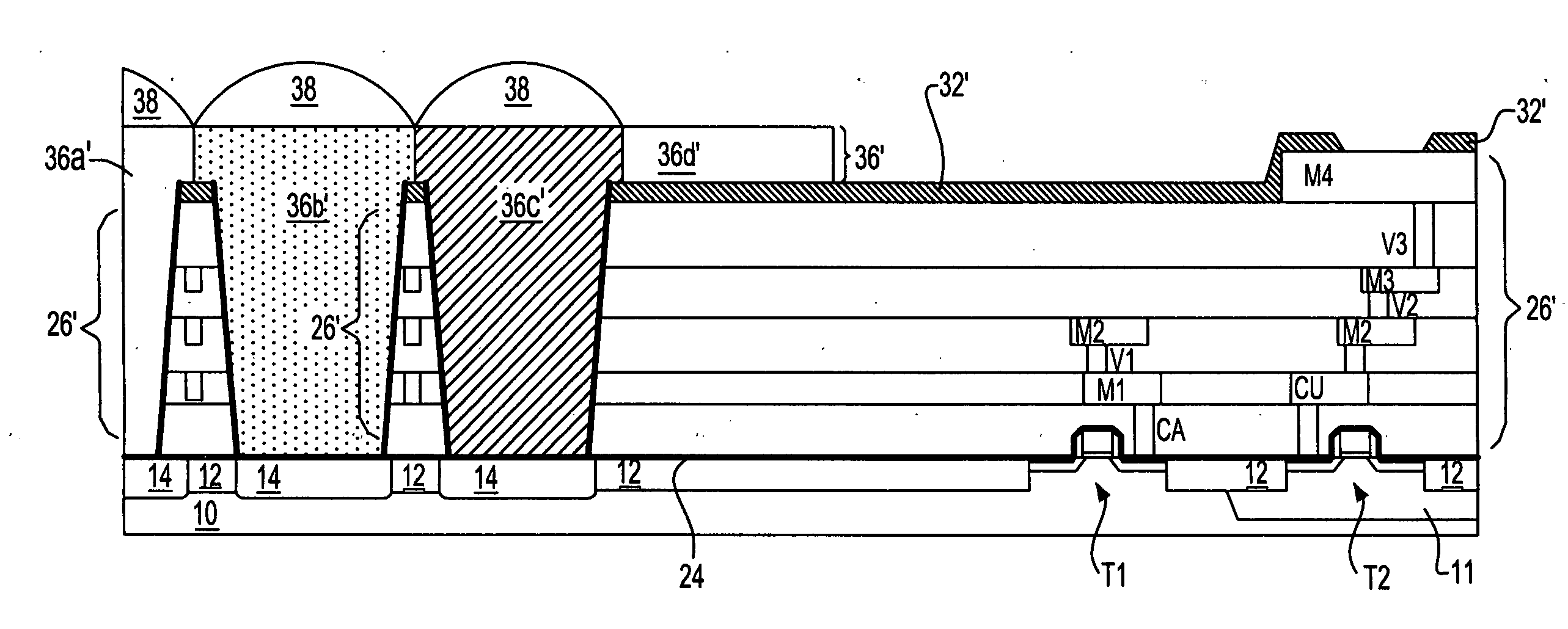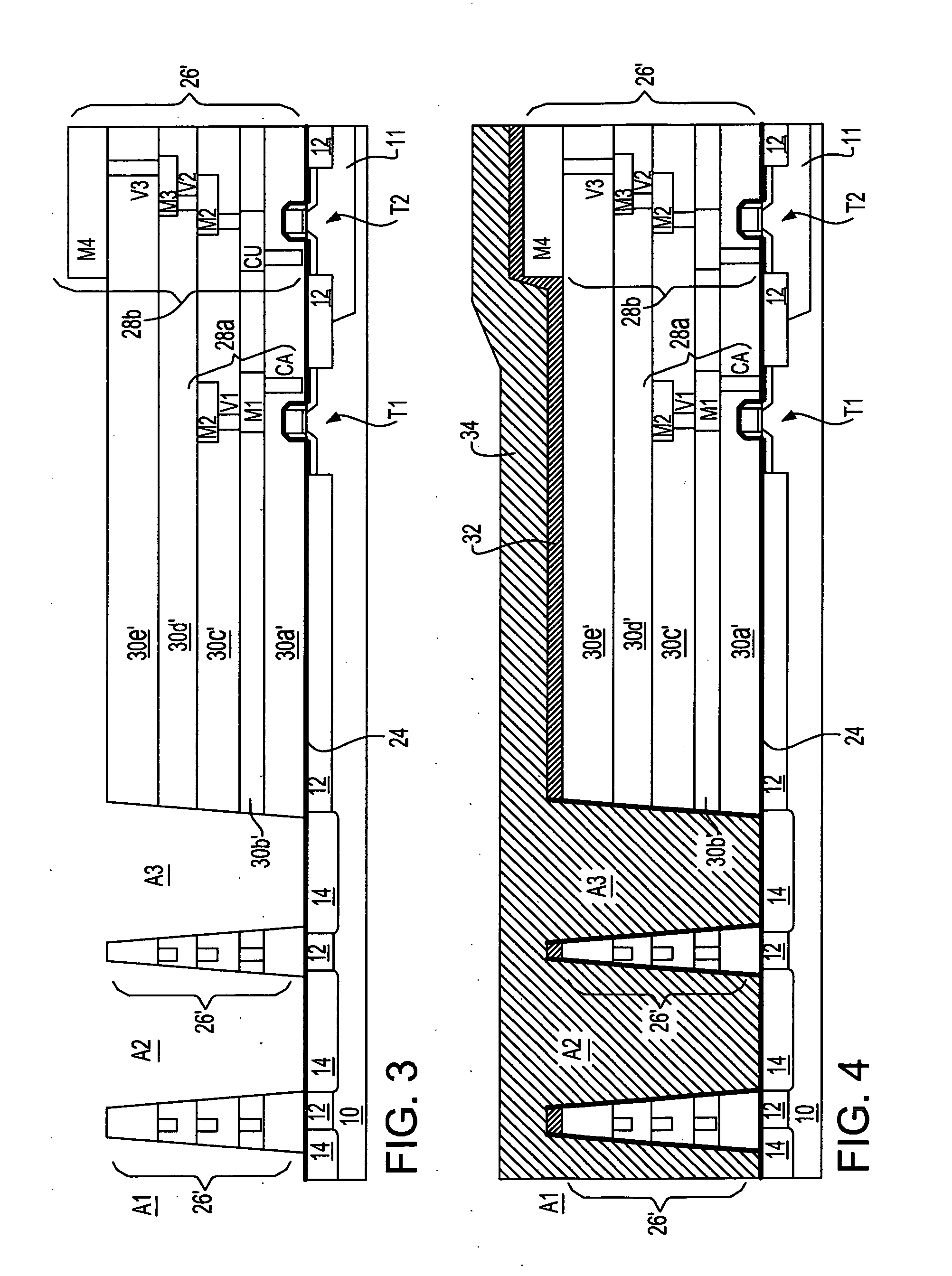Pixel sensor structure including light pipe and method for fabrication thereof
a technology of pixel sensor and light pipe, which is applied in the direction of semiconductor devices, diodes, electrical devices, etc., can solve the problems of cmos image sensor color discrimination, pixel dimensions within cmos image sensors are certain to continue to decrease, and the performance of cmos image sensors continues to be compromised, so as to achieve enhanced reflection
- Summary
- Abstract
- Description
- Claims
- Application Information
AI Technical Summary
Benefits of technology
Problems solved by technology
Method used
Image
Examples
first embodiment
[0031] The series of isolation regions 12 may comprise isolation regions including but not limited to local oxidation of silicon (LOCOS) isolation regions, shallow trench isolation regions (i.e., having a depth up to about 5000 angstroms) and deep trench isolation regions (i.e., having a depth up to about 60000 angstroms). Typically, the first embodiment uses shallow trench isolation regions that are located within shallow isolation trenches. The isolation regions 12 (whether located within shallow isolation trenches or deep isolation trenches) may comprise any of several dielectric materials. Typically included are oxides, nitrides and oxynitrides of silicon, as well as laminates thereof and composites thererof. Oxides, nitrides and oxynitrides of other elements are not excluded.
[0032] Typically, the series of isolation regions 12 is formed at least in part using a blanket layer deposition and planarizing method. Appropriate blanket layers may be formed using thermal or plasma oxid...
second embodiment
[0066] To minimize the foregoing scattering, an additional variation upon the second embodiment is provided within the context of the CMOS image sensor whose schematic cross-sectional diagram is illustrated in FIG. 8. The CMOS image sensor whose schematic cross-sectional diagram is illustrated in FIG. 8 correlates with the CMOS image sensor whose schematic cross-sectional diagram is illustrated in FIG. 7. However, as illustrated specifically within the insert to FIG. 8 an exception exists insofar as exposed edge and corner portions of the exposed ledge of interconnection layer M3′ are chamfered to provide a smoother surface that allows a reduction in light lost due to reflection or scattering from the top surface ledge of interconnection layer M3′. The resulting metallization layer is designated M3″. The capping layer is designated as CL′ and the combination is designated as M3′″.
[0067]FIG. 7 and FIG. 8 show a pair of schematic cross-sectional diagrams illustrating a pair of CMOS im...
PUM
 Login to View More
Login to View More Abstract
Description
Claims
Application Information
 Login to View More
Login to View More - R&D
- Intellectual Property
- Life Sciences
- Materials
- Tech Scout
- Unparalleled Data Quality
- Higher Quality Content
- 60% Fewer Hallucinations
Browse by: Latest US Patents, China's latest patents, Technical Efficacy Thesaurus, Application Domain, Technology Topic, Popular Technical Reports.
© 2025 PatSnap. All rights reserved.Legal|Privacy policy|Modern Slavery Act Transparency Statement|Sitemap|About US| Contact US: help@patsnap.com



